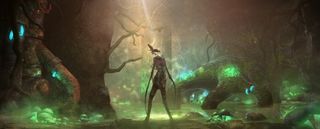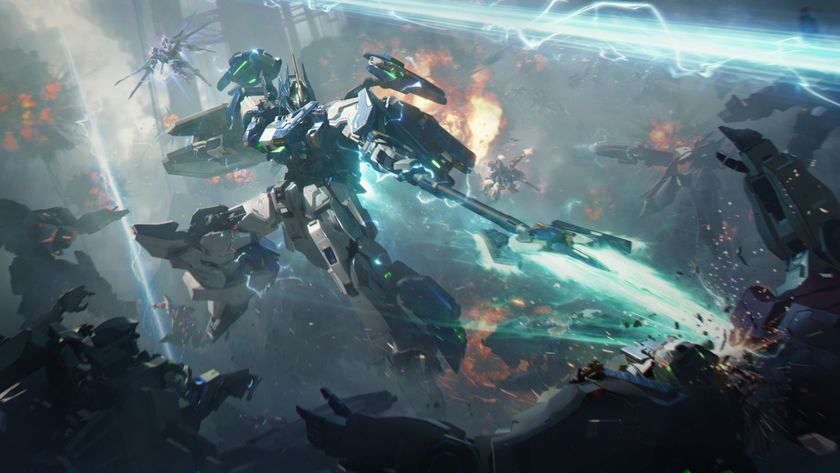Massive Black interview from making art to making games
Interview with Massive Black President Chris Hatala about the art house’s first title
You may not have heard of Massive Black, but you’ve heard of its clients. Since 2003, the collective has grown from a handful of concept artists, animators, and 3D models to a full-on commercial art house supported by an international team of digital artists. The studio’s done work for Blizzard, Sega, Nintendo and EA with teams in downtown San Francisco and Shanghai. After creating a successful artist-driven collective with ties to the biggest names in the entertainment business, what's next for Massive Black?
Well, aside from holding workshops designed to help young artists gain insight into digital art-making, publishing books and starting their own online art school (Jason Manley's The Art Department), they've been working on bringing a long-held creative dream to life. During this year's Massive Black concept art workshop, WorkshopSF, President/CEO Chris Hatala and Senior Art Director Coro Kaufman were on hand to announce the impending release of Massive Black's first videogame, Mothhead.
Based on the eerie mixed media sculptures of Hollywood maquette maker and concept artist Peter Konig, Mothhead is a game that defies easy categorization. Made in collaboration with Unity, creators of the artist-friendly Unity 3D game engine, Mothhead stars an unlikely hero – a bizarre, alien-like creature with a moth for a head. You can check out our first impressions on Mothhead here. The surreal puzzler defies the usual categorization with its unique mechanics and art style. Fortunately, Chris Hatala sat down with us afterwards and gave us his take on the project.

Above: BioShock 2, Killzone 2, and Silent Hill are just some of the titles Massive Black has contributed to
GamesRadar: Why take the risk now of making your own game?
Chris Hatala: It's very simple. You make other people's stuff for so long, there's a longing to make your own thing. It's really something we've been doing ever since we started but it's only come to fruition just now. We always were creating IP – we've got a ton of intellectual property just sitting around that we're waiting to do stuff with. But from the beginning, the outsourcing was the way to fund the studio. You've got to generate revenue to keep the doors open. No one's gonna pay us to make a game if we're not proven so we have to find a way to do it in our free time. We've done so many other people's games – we have over 300 clients – so we've had the knowledge to do it. We just didn't have the technical ability which Unity's now provided.
Sign up to the 12DOVE Newsletter
Weekly digests, tales from the communities you love, and more
GR: So you mention having different IP in the works for a while now. In addition to Mothhead, you've also got Degenesis and Transient – how did you decide which of them would be the best candidate for interactive entertainment?
CH: Each of the IP has a graphic art element related to it, right? Like Degenesis for instance, Marko Djurdjevic's pen and paper game that he made. A full book with the life history of every character, every detail in the world... he made up this whole world and we got the rights to it but we saw it as a very MMO type game. Way too big for a studio like us. It'd be great to do, but there's too much manpower involved in an MMO. There are a few other ideas though and there are a few we're keeping under wraps that we're pursuing still internally but having worked on Mothhead for so long in one form or another, we've acquired so much material on it.
It was a turn-key solution because when Unity asked us if we had any good ideas, one of the main reasons we supplied Mothhead was because we've got fifty grand worth of concept on this. If you want a turn-key solution, here it is. We've got the levels spec'ed out, all the characters are built, they're all rigged, they're all animated – we've got tons of stuff, we just need to build the assets that we're going to put in there specifically. We had a good head start and that's really the only way we could have gotten done what we got done in three and a half months. It's been hard but it's totally worth it to get this off the ground. We're excited.

Above: Concept art Massive Black's Mothhead
GamesRadar: So in video games, you're often selling players a fantasy – letting them become someone they'd never in their normal lives, get to be. Who do you think will be drawn to your hero character? Who wants to become Mothhead?
CH: Mothhead is a hero character but he's not your three act structure, the hero's journey, mask of a thousand faces, whatever.
GR: You're taking this Mothhead idea through a three-stage transition. From fine art sculptural maquettes that were their own thing to digital art to interactive entertainment.
CH: Yeah and they're not associated to each other.
GR: So if they're not associated with one another, what to you is the most challenging thing about remaining true to what was originally special about those sculptural pieces?
CH: How can you really do that? You can't. Because only he (artist, Peter Konig) knows that. That's only in his head. Pete Konig, who did the mixed media sculptures is super-talented and we've known him for a very long time. But there's no way to know just what's in Pete's head. I would never in a million years design something like these and they're just like second nature to him. The way I see it, there's two ways you can do it – either you start with the characters or you start with the story. It's one or the other. It just so happened that we started with the characters.
Most Popular







